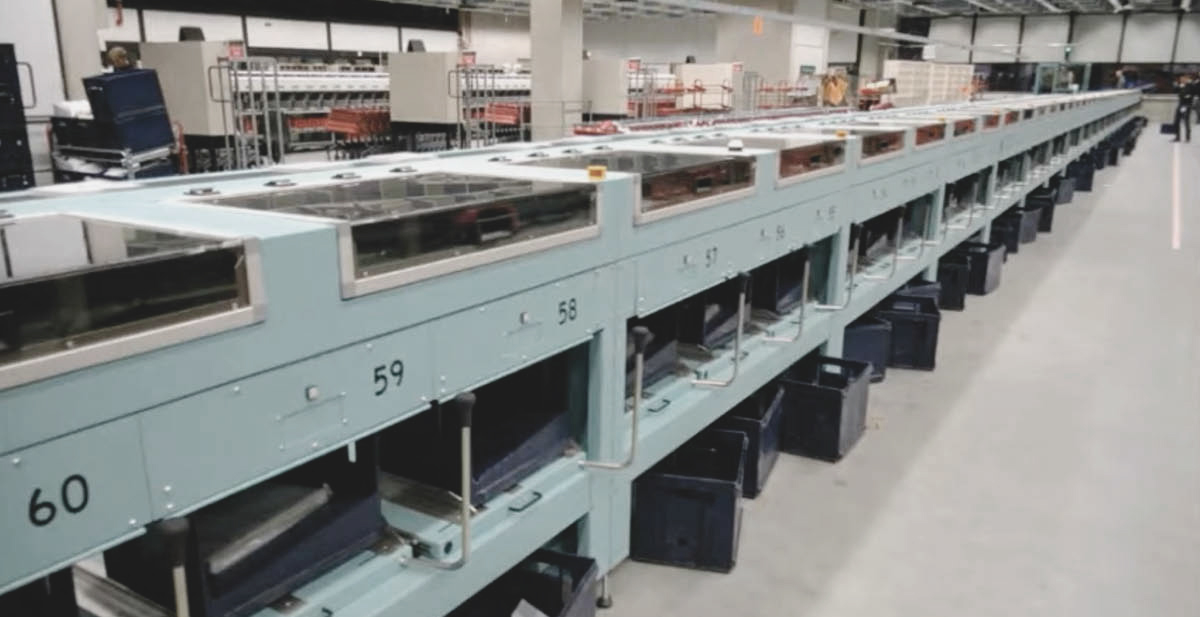
Rest mail often eludes automatic sortation and commingling into sequenced mail streams with automation compatible mail. This means that it has to be sorted manually by the postal delivery person who has the route knowledge necessary to perform the task. What should be a simple sortation process was a long, expensive, complicated and time-consuming step. But two years ago, ID Mail Systems launched an exciting new product for the postal industry. The company’s newest system, the Dispatcher Max, was designed to code, print and sort rest mail.
The Dispatcher Max is unique due to the specific requirements that came with this hefty task. The Max needed to manage the process and sort a variety of mail including very small postcards, mangled and oddly filled letters, large thick packets and flats, and even small boxes and packages that are delivered by the postman. To accomplish this, the Max needed to print and affix labels on almost any material that is mailed today. This includes plastic, cardboard, paper, Tyvek, polythene, packaging materials and newspapers. The labels, which were designed to allow room for a 16-character postman walk sequence code and forwarding address, if applicable, needed to be removable in case they covered important information or advertisements on the mailpieces. The machine also needed to sort an average of 10,000 mixed pieces per hour with the ability to sort to over 70 bins.
The printing of the postal sequence code proved to be very effective. Even with uneven surfaces and the varied materials and backgrounds, the system provided very clear and human-readable codes. This gives workers in the sorting center the ability to easily and more cost-effectively merge the rest mail into the automatically sorted mail. Printing the sequencing codes on the mailpiece is the most cost-effective method of providing sorting staff with the information needed for multiple sort passes. If the code is not printed, addresses must be looked up via voice recognition or OCR processing, or be human recognized, which makes the process slower and/or requires more knowledgeable and expensive sorting staff.
While the Dispatcher Max demonstrated its tremendous flexibility and forgivingness to handle rest mail, like all new products, ID Mail saw opportunities to further improve it.
The first design worked extremely well on mailpieces that were stable. So even with the large mailpiece size spectrum, the system processed them accurately at a high throughput and with accuracy. However, mailpieces that were not stable, such as very lightweight but lumpy padded envelopes that did not fully contact the belts and roller surfaces, were prone to changing position when transported from one module to the next. This made for tracking and sorting challenges. When a piece was ‘lost’, it resulted in a higher reject rate or could potentially cause a system jam or stoppage.
ID Mail engineers took a fresh approach to each transition point, belt and roller design, with the goal of minimizing the impact of the geometries and touchpoints to provide the smoothest and least disturbing paper path that could be deployed. With these changes, ID Mail is confident that its Dispatcher Max is a one-of-a-kind solution that provides a truly unique and cost-effective solution for processing rest mail.